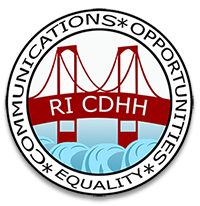ADA Resources
Providing Equally Effective Communication
Under Titles II (State and Local Government) and III (Public Accommodations) of the ADA, all state and local governments and public accommodations are required to ensure their communications with Deaf, Deaf-Blind, and Hard-of-Hearing persons are as effective as communications with hearing persons. This requirement is referred to as “effective communication,” and it is required except where a state or local government can show that providing effective communication would fundamentally alter the nature of the service or program in question or would result in an undue financial and administrative burden.
What does it mean for communication to be “effective communication”? It means that whatever is written or spoken must be as clear and understandable to people who are deaf, hard-of-hearing, and hearing loss as it is for hearing people. This is important because the communication needs amongst deaf, hard-of-hearing, and persons with hearing loss do vary. No “one-size” fits all when it comes to communications.
How is communication with deaf, hard-of-hearing, persons with hearing loss, and speech-disabled individuals different from communication with hearing people? For most D/HH individuals, there is no difference. And for them (persons with hearing, seeing, speaking, reading, writing, or understanding challenges), they use different ways to communicate than the hearing people.
The effective communication requirement applies to ALL Deaf, Deaf-Blind, Hard of Hearing, and Hearing Loss members of the public, including job applicants, program participants, and even people who simply contact state or local government agencies seeking information about programs, services, or activities.
Credit: U.S. Department of Justice, Civil Rights Division
